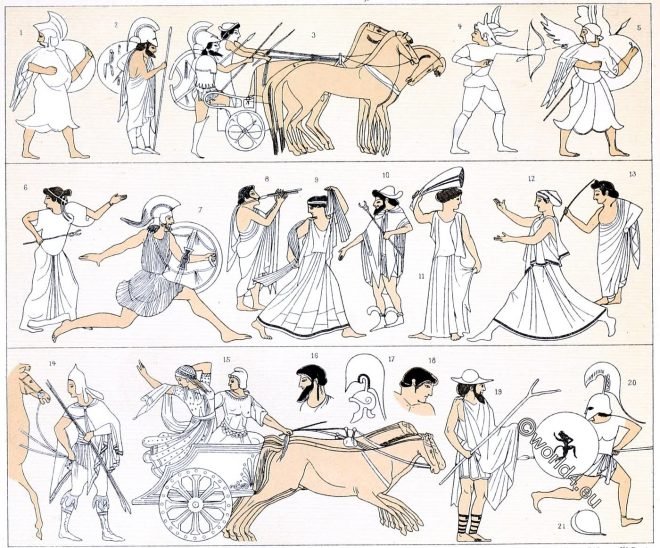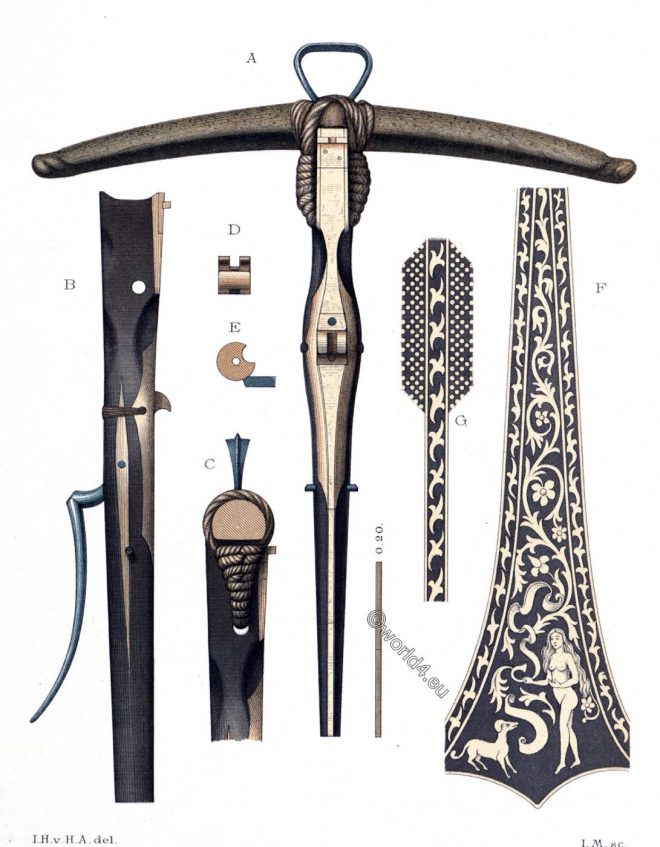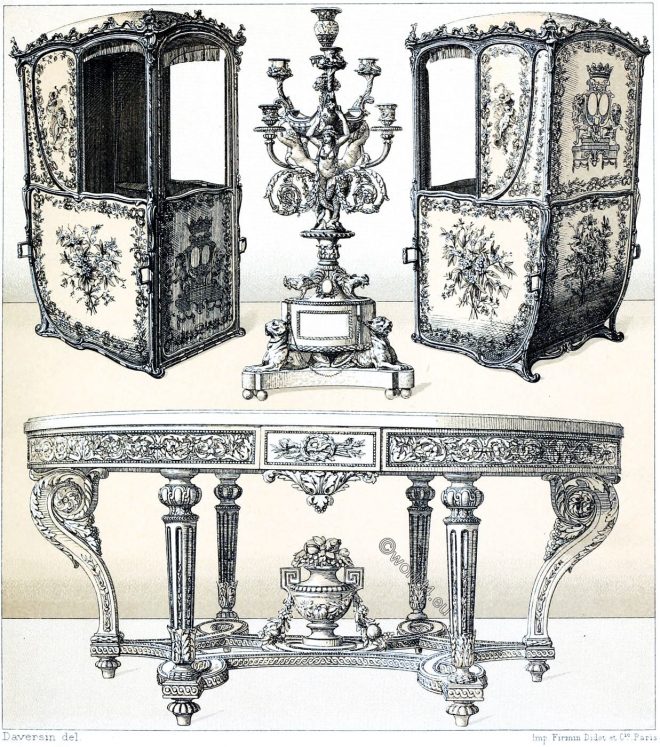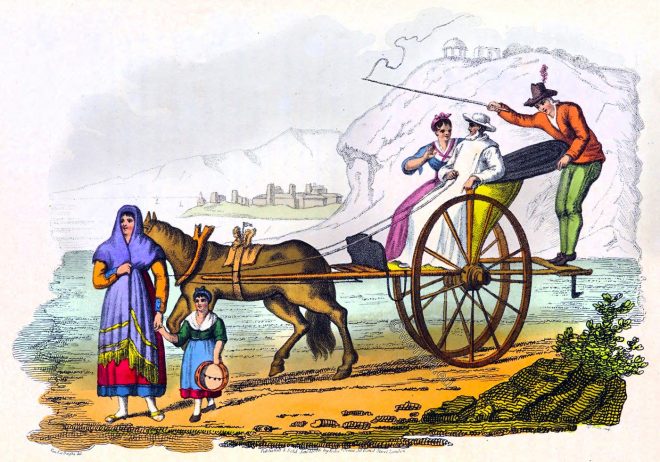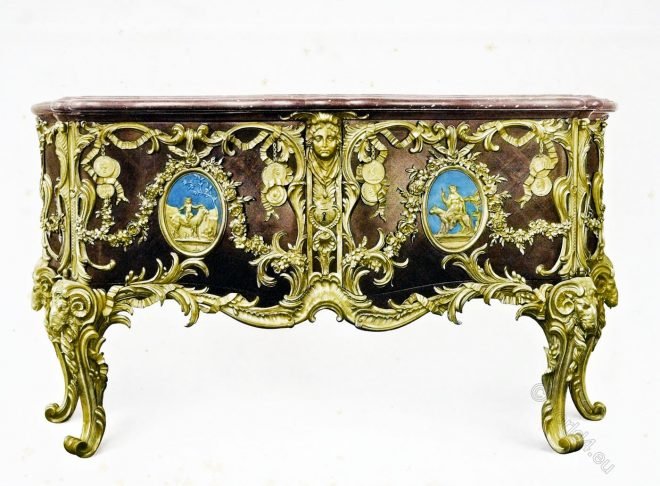The portrait of a woman from the first half of the 16th century shows a bride from a rich Nuremberg patrician family. The Nuremberg City Council declared themselves patricians during the Renaissance
The Etruscans. Culture, costumes, warriors in Etruria.
The Etruscans were an ancient people in Etruria, who lived in northern central Italy. The Etruscan culture can be traced in this area between 800 B.C. and the second half of the 1st century B.C.
Italian princes, herald and squires in the fashion of the 15th century.
Italian princes in the fashion of the 15th century. Italian noblemen, heralds and squires in the fashion of Mi-Parti. Garments with coloured lobes, saddles and bells. Crakow shoes also known as poulaines or pikes.
Crossbow of the 15th century. Ranged weapon with fishbone bow.
This strong Crossbow consists of fishbones. Usually such crossbows have the steel bow, but for the winter time such fishbone bows were chosen.
Portrait of Margaret of York. The lady with the hennin.
French school, second half of the 15th century.
Portrait of Margaret of York (1446 – 1503), wife of Charles the Bold. The lady with the hennin.
The palanquin. France 18th century. Louis Quinze style furniture.
Europe. 18th century. France. Magnificent armchair. Second half of the century. The palanquin.
Royal Crowns & Sceptre of the Frankish kings.
Crowns and scepters of the Merovingian and Carolingian Frankish kings in the Middle Ages.
Furniture from the era of Louis XVI. The litter. Rococo 18th c.
The palanquin of Queen Maria Lesczinska. Litter from carved and gilded wood, painted with flowers and cupids. The Independence Candelabra.
Naples Italy. A calessino, or hired carriage, Hackney chaise.
A calessino. Italian scenery; representing the manners, customs, and amusements of the different states of Italy.
Médaillier in the form of a chest of drawers. Louis-quinze (style rocaille).
The Médaillier is considered one of the most beautiful creations of French furniture from the early days of Louis XV’s reign.


